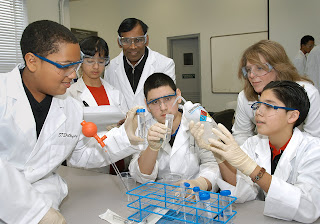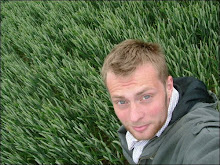BNL was founded in 1947, with a mandate to promote research across the fields of physics, chemistry, biology and engineering. I began by asking Ken how long BNL has been involved with schools outreach and science education.
'The Laboratory has been a supporter of science education pretty much since its inception. Science education and workforce development are part of our mission at BNL, and we have been fortunate to have leadership support to enable greater interaction with our academic community. College students have come here for internships since the early 1950s and the Lab frequently had open houses and school outreach programs well back into the early 1960s.
Over the past six years we have developed hands-on inquiry-based experiences for middle and high school students to enable them to conduct science similar to that of our researchers. These are offered at cost and have become quite popular with local schools. These programs have expanded the way in which we satisfy our responsibility for educating the next generation of scientists.
Successful offerings need to be exciting, with engaging activities that enable students to realize science is accessible to them. The best programs often include a story as well – we try to humanize the program by relating it to our scientific staff actually working on the problems being presented. Programs that show how the academic work applies to real life problems we face as a society tend to do well.'
What can a visit to BNL do for students in mainstream schooling?
A visit to BNL becomes a very memorable experience for students. The excitement of science and the magnitude of the facilities, with seven Nobel Prizes being earned here, leaves a lasting impression. Ideally, the visit provides students with relevance to their academics, a bit of career exploration, an understanding of the integration of subject matter, and an appreciation for what science is and can do for humanity.
How can you make cutting edge research accessible to such a wide age range of visitors?
This can be a challenge because of the depth of training our scientists go through to become world class researchers. Their communication processes become fraught with technical jargon and complex content to the point that researchers in other fields may not fully understand the content. One thing you find out quickly about scientific staff is that they have a passion for sharing their work with interested people. Often, we will work with researchers to help them drop their jargon and put things into laymen’s terms, and to help them clarify the “so what” of their research. This makes for a more enjoyable interaction for both the scientists and the audiences they reach out to.
What is the lasting impact of a visit to BNL?
As noted above, the experience is usually a memorable one. There are several ways for students to stay engaged. Venues would include everything from readings in a bibliography supporting our elementary programs, to summer research experiences, attending open to the public seminars and lectures, or participating in science-based competitions. Another great way is to have the teacher participate in programs such as our “Introducing Synchrotron Science to the Classroom” or the “Open Space Stewardship Program.” In these programs, teachers can work with the Lab, interact with scientific staff and others, and develop and enhance their own skills in guiding students in science classes and research.
Do your educational programs focus on “hard science” or is there scope for students to consider the social & philosophical implications of BNL’s work?
Much of the work at BNL is on the hard sciences, but there are often considerable social and philosophical implications from our work as well. For example, students working in the nuclear diagnostics area for neuroimaging are deeply engaged in “hard science,” but their results can have a profound impact on the larger understanding of addiction and treatment. Another good example is the work the Lab does on nuclear non-proliferation. This work is technical in nature, but also crosses into policy discussions affecting nuclear material management, control and safeguards.
In an age of ruthlessly pragmatic ‘Tiger Mothering’ and an increasing focus on educating children to aid them in a future job market, what can students learn from the ‘blue skies’ research at BNL?
So much of talent in the workplace is in the ability to question, think critically, solve problems, be resilient to failure, and move forward productively toward a reasonably well understood objective, while still being flexible to change. “Blue Skies” kind of research can be a way to learn many of these skills. Be creative and thoughtful, design a means to test your hypothesis, don’t be afraid of failure, and find a way to right yourself. What more could an employer want?
You can find out more about the educational programs at Brookhaven National Laboratory at http://www.bnl.gov/education/



No comments:
Post a Comment